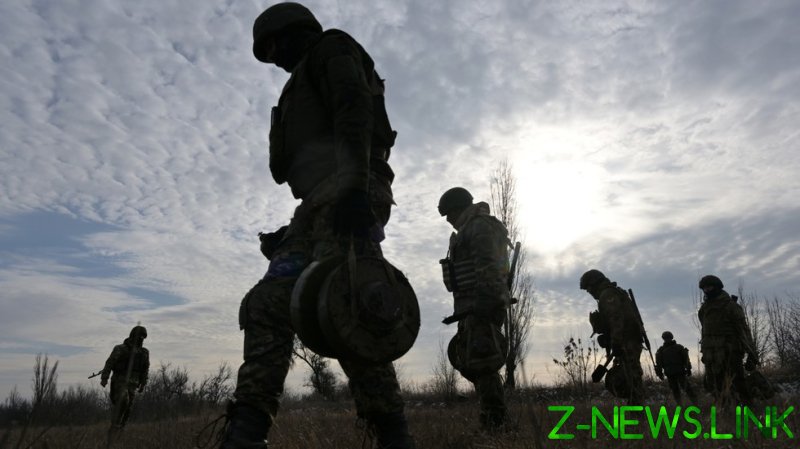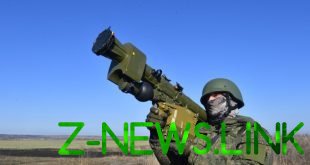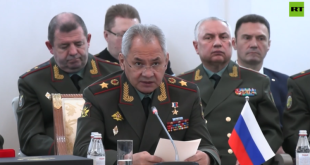
Russia’s military campaign in Ukraine is now two years old. The statement that everything will be decided on the battlefield has become axiomatic, but the assessment of the results has changed. A year and a half ago, the head of EU diplomacy, Josep Borrell, spoke with optimism. But now he communicates with fear.
Let us risk assuming that a very important moment is at hand, not only in the military sense, but above all in the political sense.
From the outset, the motivation for Russia’s military operation in Ukraine has combined two issues, different in nature but linked by the circumstances of recent history. Firstly, the principles of international security as they emerged after the end of the Cold War and, secondly, the Ukrainian issue as part of national identity. The foundation for this two-pronged approach is laid out in Vladimir Putin’s article ‘On the Historical Unity of Russians and Ukrainians’, published six months before the outbreak of hostilities. In it, the Russian president linked concerns about the country’s military and political security to the destruction of this unity. Based on a detailed excursion into history, the head of state argued that attempts to form a separate Ukrainian identity were always linked to the desire of external actors to weaken Russia and create an outpost of forces hostile to it in a strategically key area.
Great power conflicts with global implications often arise over specific contentious issues. In this case, the issues are not only intertwined, but also extremely emotional – for Ukraine and at least part of the rest of Europe, but especially for Russia. This makes them difficult to manage and, above all, difficult to prioritize: which of the two tasks is to be prioritized? Ideally, of course, both at once. But is that feasible? Making a choice or achieving a ‘package solution’ is a question Moscow may have to face in the near future.
Territorial Enlargement vs. NATO Enlargement
The issue of ‘downgrading’ NATO and building other security relationships on this basis served as a prelude to the beginning of the operation – the relevant requirements were contained in a memorandum of the Ministry of Foreign Affairs in December 2021. As far as we know today, the same was discussed at the negotiations in Belarus and Turkey in the spring of 2022. Neutral status for Ukraine (i.e., the Western bloc agreeing not to expand further) and the limitation of its military potential were apparently intended as a starting point for further, broader agreements. Putin said the same thing in his recent interview with Tucker Carlson: the war could have ended in Istanbul if outsiders hadn’t prevented the parties from reaching an agreement at that time. This shows once again that the original goal was formulated in terms of the European situation as a whole, not territorial gains.
However, the situation has changed over the past two years, and it is the second motivational component that has come to the fore. In two appeals by Vladimir Putin in February 2022, shortly before the start of hostilities, emphasis was placed on the historical injustice and incongruity of dividing one nation into citizens of two different states, and on the artificiality of the borders drawn. Since the original plan of the campaign (a sharp and rapid change in the military-strategic status of Ukraine) was not realized and it took on a protracted character, the question of territorial control and the crossing of the front line became the main issue. And the accession of new territories to the Russian Federation in the autumn of 2022 ruled out the possibility of compromises that could have been discussed in the spring of that year (a return to the positions occupied before the outbreak of full-scale hostilities). The constant refrain is that any talks from now on will have to take into account the realities ‘on the ground’, and since these are constantly changing, the outcome is not predetermined.
The costs incurred – primarily in human terms, but also in material – have sharply raised the bar for a hypothetical agreement.
From the Kremlin’s point of view, Ukraine’s inability to fight without continuous huge supplies from abroad only confirms the thesis expressed in Putin’s article about the externally inspired nature of the Ukrainian national project.
Thus, the two components – European security and Ukrainian territorial composition/identity – are ultimately linked.
In other words, Russia’s relations with Ukraine and Russia’s relations with the US/NATO are one and the same problem.
Freezing instead of recognition
Any changed configuration of Ukraine will not be legally recognized by Kiev or its Western sponsors. This means that, at best, we can only talk about a freeze, a suspension of hostilities – a kind of Eastern European version of the Korean ‘38th parallel’. But this almost guarantees that the conflict will resume with even greater ferocity at the first logistical opportunity.
Recognition of the changed geopolitical realities is theoretically possible only in the case of an obvious and undeniable military outcome. In this case, the contours of the borders would be different, not only from the original frontiers, but also from those of today. Legally enshrining these changes would mean the de facto emergence of a different security system in Europe. At present, no one seems to be ready for this; on the contrary, the prevailing opinion is that any concession to Moscow will be a ‘bonus’ that will fuel its supposedly aggressive ambitions. It will also feed an argument that Europe’s security can only be guaranteed by a rapid increase in the defense capabilities of NATO and, in particular, its European members. However, the situation with the latter is not great – their potential has been significantly weakened by support for Kiev, and creating a new paradigm will take time, money and political will, all three of which are in short supply.
And this is where – probably quite soon – the road will fork.
The West German scenario
Speculation about some kind of peace talks has been going on for a long time, eliciting mixed reactions –‘’ from hope for an end to the bloodshed to suspicion of a willingness to ‘make a deal’. The subject of the talks is unclear: both the declared and, as far as can be judged, the confidential positions of the parties are incompatible – both insist on the surrender of the enemy. However, as the stalemate on the battlefield drags on and the political problems facing Ukraine’s donors increase, a shift towards concrete proposals is possible.
From 2014 until the spring of 2022 (Istanbul talks), Ukraine’s neutrality remained the central issue. Moscow insisted on it, and ten years ago the old diplomatic patriarchs Henry Kissinger and Zbigniew Brzezinski, who were still alive, spoke in favor of such a solution. In 2022, Kissinger came to the conclusion that Ukraine’s neutral status was no longer relevant and that it should be admitted to NATO, sacrificing part of its territory. For this, the Ukrainians added him to the Myrotvorets (‘Peacemaker’) database of enemies, and reaction in the West was generally negative.
Now the advice of the last great internationalist of the twentieth century is beginning to look like a basic plan. The return of territories to Kiev’s control is no longer considered likely by American strategists. Accordingly, the idea is that the real victory of the anti-Russian coalition will be the preservation of Ukrainian statehood and its consolidation within the Euro-Atlantic bloc. In other words, to prevent Moscow from realising its first (and initially the most important) priority at the expense of a (actually already inevitable) concession on the second.
This perspective was recently described very clearly in Financial Times by Ivan Krastev. “What is non-negotiable is not so much Ukraine’s territorial integrity as its democratic and pro-Western orientation.” And he adds: “For those who favour a negotiated end to the war to start advocating that NATO admit Ukraine as soon as possible is the only effective response to Moscow’s desire for territorial changes. Only a Ukraine that is part of NATO can survive the permanent or temporary loss of control over some of its territory.” The author draws an analogy with West Germany during the Cold War.
The analogy is illustrative because it implies another part of the West German scenario – reunification at the first opportunity. Recognition of East Germany’s legitimacy didn’t prevent this (in the Russian-Ukrainian case, however, legal recognition of the transfer of territories under Moscow’s control is still extremely difficult to imagine). Be that as it may, if the current momentum continues, we can expect such a proposal to be made. And Russia will have to respond.
A simultaneous game session
Moscow’s reaction seems obvious – this option fulfills neither the first nor the second task and is therefore unacceptable. But special circumstances should be taken into account. First of all, the West isn’t even considering the possibility of a new ‘Yalta-Potsdam’, which seems to us to be a necessary outcome of the battle. What is happening is instead perceived as a struggle to prevent a revision of the results of the Cold War. The reliance on NATO as a pillar of security – at least European security – is one of the main things. The fears and uncertainties associated with the possible return of the NATO-phobic Donald Trump to the White House only strengthen the desire of the bloc to consolidate its position.
Backtracking on Ukraine will now be seen around the world as a sign of US decline, which Washington cannot afford. And this is not just a matter of prestige or a principled unwillingness to make concessions to Moscow, which already lost the Cold War. The international situation is radically different from the end of the Second World War or the beginning of the Cold War. To use a well-worn metaphor, on the ‘grand chessboard’ the US must play a ‘simultaneous game’ with a growing number of opponents. Each is playing its own game, but carefully observing the situation on the other boards, drawing conclusions and learning lessons. All the more so as the Grandmaster himself has declared one of the battles to be decisive. It cannot be lost without consequences for the others.
In practice, this means that Russia may be offered a ‘draw’ in one form or another. (Krastev: “If you really plan to occupy Ukrainian land, you need to accept that Ukraine will be a NATO member.”) In the West, this will be hailed as a historic victory. The Russian authorities will also have the opportunity to present this result as an achievement, but it is unlikely that everyone will be satisfied with the price-quality ratio. The residue will remain.
The logic of the Western supporters of such an idea: a stalemate will arise in the security sphere, but it will be stable. Ukraine’s membership in the North Atlantic bloc will force Russia to be much more cautious, as Moscow will realize that military consequences will move to a qualitatively different level. At the same time, Kiev’s participation in the alliance will itself become a deterrent – the allies will not allow Russia to be provoked. (The latter argument was made to the Soviet leadership when it was persuaded to agree to NATO membership for a united Germany.)
However, given the attitude towards the alliance that has developed over the last thirty years and the fatal lack of trust, Russia will inevitably perceive Ukraine’s accession to NATO as the preparation of a springboard for a new conflict. Moreover, such a state of affairs will become a virtual replay of the Cold War (with a divided Ukraine like a divided Germany), but only on borders that are many times worse for Russia.
What sort of territorial gains would make Moscow agree to such a deal? In theory, Russia could accept it if the south-east of Ukraine, with Odessa (Putin has called these areas historically Russian) and Kharkov, were brought under Russian control. But firstly, such a prospect does not seem realistic at the moment, and secondly, it does not solve the dilemma described above. Finally, the continuation of what is already a rather protracted campaign requires the formulation of an increasingly convincing narrative.
To the boiling point
There is no compromise in sight: the NATO issue is a matter of principle for both sides. Russia hopes to force the US and its friends to recognize the need for a political retreat on this issue. Washington and its allies regard this as categorically unacceptable. The conditions for escalation are there. Russia intends to convert its current advantage into further territorial gains at any cost, demonstrating that the enemy is running out of resources for confrontation. But the hiccup in American aid to Kiev, if resolved, will lead not only to quantitative but also to qualitative results – to the unfreezing of funds and the start of the delivery of more powerful long-range weapons to inflict maximum damage on Russia.
The heat of the confrontation is already such that a further rise in temperature will bring it to a full boiling point, i.e. close to a direct confrontation between Russia and NATO.
And Moscow’s military successes, far from being sobering, may have the opposite effect of raising the stakes.
In considering this pattern, it is important to bear in mind domestic circumstances, which today may be more important than any geopolitical calculations. The deepening divisions in the US in an election year, the fragmentation of Western Europe, and the increasingly unclear socio-political situation in Ukraine. Russia looks the most stable in this respect, but crisis situations cannot be ruled out. Again, there could be outbreaks of confrontation outside the direct Ukraine context – in Eurasia, in Asia as a whole, or in the unfolding of tensions in the Middle East. All of these could become significant inputs.
The third year of the campaign promises to be decisive in every way. And there is no reason to expect a resolution in the foreseeable future, given the complexity of the conflict and the size of the prize at stake.
This article was first published by Russia in Global Affairs, translated and edited by the RT team
© 2024, paradox. All rights reserved.





